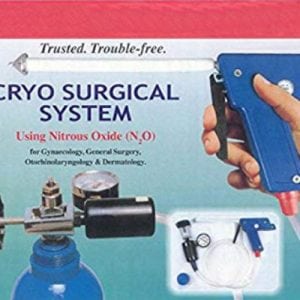
Agriculture
February 5, 2024
Super Deluxe Silencer Gun Model: CRYO-004
Read SolutionImplemented by
BASCO India
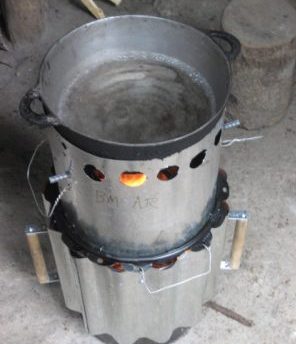
Updated on December 29, 2023
·Created on June 11, 2016
Designed by Art Donnelly from SeaChar, The Estufa Finca (Farm Stove) is a TLUD-style micro-pyrolysis device with a capacity of 20 litres.
The Estufa Finca Farm Stove is a top-lit updraft (TLUD) micro-gasifier cookstove that can create biochar from a wide range of dry organic input materials. The biochar produced from the stove can be used as a soil amendment to increase soil health and improve agricultural yield. When used as a soil amendment, the biochar produced from the stove also acts to sequester carbon that would otherwise be released to the atmosphere. A promotional video highlights the stoves biochar applications during implementation with rural farmers in Costa Rica.
Video available on how to use the Estufa Finca.
Target SDGs
SDG 7: Affordable and Clean Energy
SDG 3: Good Health and Well-Being
Market Suggested Retail Price
$150.00
Target Users (Target Impact Group)
Household
Distributors / Implementing Organizations
SeaChar
Competitive Landscape
Countries
Costa Rica, United States
Manufacturing/Building Method
For 2015, it was mass produced by SeaChar in the United States, also produced by local micro-businesses in Costa Rica. The Estufa Finca stove is constructed from common materials available in developing countries: a 20 liter (5 gal) combustion chamber made from a metal bucket, surrounded by a shroud formed from galvanized roofing. Fabrication consists of cutting rebar, cans, buckets and shroud materials; drilling holes; snipping tin and de-burring and grinding rough metal edges. Stove assembly consists of fastening stove components with rivets, bolts, and screws. A photo design guide describes manufacturing methods in detail.
Intellectural Property Type
Open-source
User Provision Model
For 2015, users could order the stove from SeaChar online, or from a distributor in Costa Rica. Users can also fabricate the stove using basic tools and materials following the design guide. For 2018, contact SeaChar on their facebook page.
Distributions to Date Status
Unknown.
Fuel type
A wide variety of dry biomass including sticks, bamboo, coconut shell, cacao chaffe, etc.
Pot type
Both
Thermal efficiency (%)
Unknown
PM emissions (g/MJ delivered to pot)
Unknown
CO emissions (g/MJ delivered to pot)
Unknown
Time to boil (min/L)
Unknown
Design Specifications
Design specifications include a 19 litres (5 gallons) capacity combustion chamber surrounded by a shell of galvanized roofing and an air base with primary air damper to control intake required for a different biomass feedstock removable cooktop. TLUD stoves can accept a variety of dry, woody biomass as fuel. See the GIZ 2013 publication on Micro-gasification for information on size, type, and preparation of appropriate fuels. An additional stove setting structure is recommended to provide a stable and protected platform to house the stove and bring the cooking surface to a desirable height for cooking.
Technical Support
Unknown
Replacement Components
Unknown
Lifecycle
Unknown
Manufacturer Specified Performance Parameters
According to SeaChar:
Vetted Performance Status
Approvecho Research Center testing results revealed an average emissions profile of 8.24 g CO/kg of dry fuel consumed and 0.18 g PM/kg of dry fuel consumed. Approvecho Research center projects an 83% reduction in Co and a 91% reduction in PM if the Estufa Finca Stove uses the same amount of fuel as a traditional 3-stone fire. In an effort to standardize cookstove performance an International Workshop Agreement (IWA) was established in 2012. The IWA created tiers of cookstove performance in order to communicate technical information more easily to the government, donors, investors, and consumers when making decisions. However, many manufacturers have not tested stoves using the newly adopted IWA performance metrics. See the Global Alliance for Clean Cookstoves for more information.
Safety
For 2018, when purchased through SeaChar, detailed instructions on safe stove operation are provided. Wooden handles allow the stove to be handled when hot.
Complementary Technical Systems
None
Academic Research and References
Anderson, P (2015). Origins, History and Future of TLUD Micro-gasification and Cookstove Advancement. Version 1.2.
Global Alliance for Clean Cookstoves. 2013. Interim Reporting Requirements for IWA Tiers of Performance. cleancooking.org. Global Alliance for Clean Cookstoves.
SeaChar. n.d. www.facebook.com.
Roth, Christa, Paul Anderson, Hugh McLaughlin, Thayer Thomlinson, and Kelpie Wilson. 2014. Micro-Gasification: Cooking with Gas from Dry Biomass. Edited by Heike Volkmer. www.bmw.de. Eschborn, Germany : Deutsche Gesellschaft für Internationale Zusammenarbeit (GIZ) GmbH.
Bradley, Kirsten. 2013. Making Biochar: Building Our First Dome School Biochar Stove. Milkwood: Permaculture Courses, Skills + Stories. March 10, 2013.
SeaChar. 2012. SeaChar Estufa Finca Project. seachar.org. SeaChar.
Aprovecho Research Center- Testing and Improving Biomass Cookstoves. n.d. Aprovecho.
International Standards Organization (ISO). 2012. Foreward ISO – International Workshop Agreement IWA 10. Cleancooking.org. ISO, Partnership for Clean Indoor Air (PCIA), Global Alliance for Clean Cookstoves.
Global Alliance for Clean Cookstoves . 2014. The Water Boiling Test (Version 4.2.3): Cookstoves Emissions and Efficiency in a Controlled Laboratory Setting. www.1library.net. Global Alliance for Clean Cookstoves.
Compliance with regulations
Unknown
Evaluation methods
Water Boiling Test (WBT)
Other Information
Details on the 2010 pilot can be found in the project report.
Recipient of a grant from National Geographic's Great Energy Challenge initiative.
A summary of how micro-gasification stoves work is provided by SeaChar and can be found here.

Agriculture
February 5, 2024
Implemented by
BASCO India
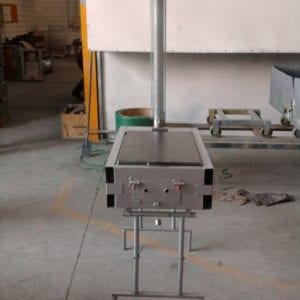
Agriculture
December 20, 2023
Implemented by
Abastecedora Palermo

Agriculture
January 6, 2025
Implemented by
M-Farm
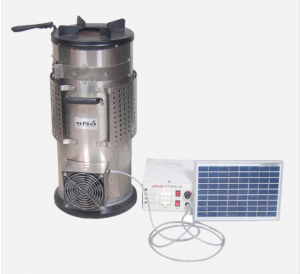
Agriculture
November 30, 2024
Implemented by
NDMI Renewable Energy Private Limited
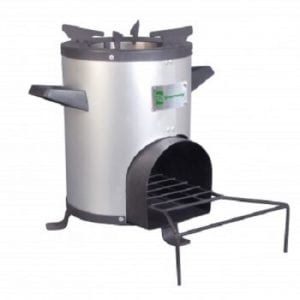
Agriculture
December 3, 2024
Implemented by
Greenway
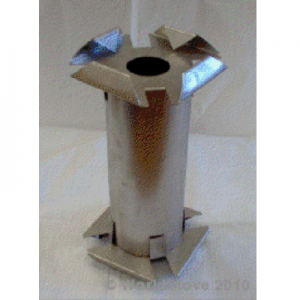
Agriculture
November 30, 2024
Implemented by
WorldStove
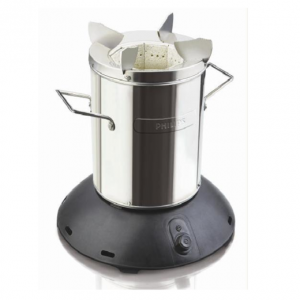
Agriculture
November 30, 2024
Implemented by
Philips
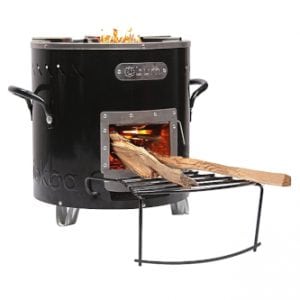
Agriculture
January 10, 2024
Implemented by
BURN Design Lab
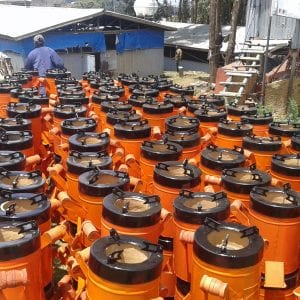
Agriculture
December 3, 2024
Implemented by
Gogle
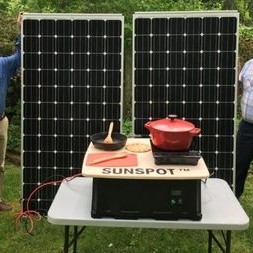
Agriculture
January 27, 2024
Implemented by
Sunspot PV LLC
Have thoughts on how we can improve?
Give Us Feedback
Nordica MacCarty says:
More thorough performance and safety testing are recommended, even a simple WBT without emissions and safety evaluation should be conducted to report important metrics such as thermal efficiency and safety score. The stove design looks unstable and likely has a high surface temperature which should be noted in decision-making and would become apparent through evaluation (even though a “stove setting” is recommended in the snapshot). Also, please specify the potential of fuel preparation required, such as the optimal size of the wood fuel or bamboo.
“relative to the UN Millennium Development goals” seems unclear to me.
Manufacturing of this type of product requires documented process and assembly standards. In volumes of 100 special attention needs to be paid to ensure that each unit is not a unique “one of†but rather follows and industrialized, documented and controlled assembly and test process.
Both coverage to obtain orders and logistics to ensure delivery must be designed to function effectively in the specified environment. The stated distribution of “Africa†and “India†is unclear as to whether these products will be used in capital cities or more broadly in regional centers or even up country clinics. The product information simply says that distribution will be made through a “NGO/Partner†… much more detail is required to define and effective strategy and ability to scale.